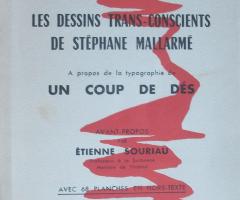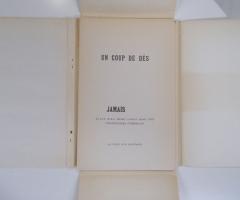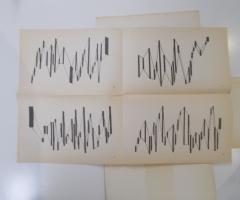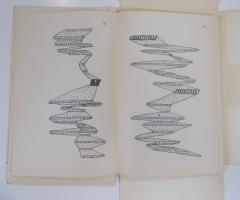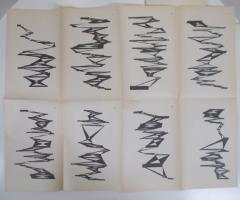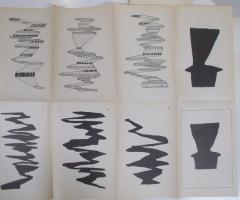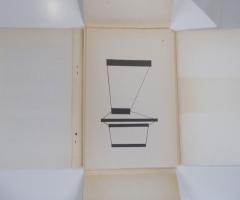LES DESSINS TRANS-CONSCIENTS DE STÉPHANE MALLARMÉ. À propos de la typographie de UN COUP DE DÉS.
Paris: Librairie Nizet, 1960
240 X 160 mm, 44 pp.
Ernest Fraenkel’s 1960 LES DESSINS TRANS-CONSCIENTS DE STÉPHANE MALLARMÉ. À propos de la typographie de UN COUP DE DÉS, or ‘The trans-conscious drawings of Stéphane Mallarmé. A propos the typography of 'A Roll of the Dice’ is an graphic improvisation on Mallarme’s Un Coup de dés jamais n’abolira le hasard (1897, 1914), which Fraenkel developed starting in 1952. Proceeding by the abstraction of the text, he reveals the coded forms in the structures of the layout of the poem and brings out a multitude of graphic figures in blocks, trapezoids, spots or dots, to visualize what he calls Mallarmé's “abstract imagery” or “plastic text”. Fraenkel's work played a decisive role in understanding the tradition of the contemporary artist's book.
Fraenkel´s (1960) edition is an early manifestation, which still figures as hybrids between a text attributed to Mallarmé' and something of its own. Even though it claim to be scholarly engagements of comparative literature, the interpretative drawings that go with the text, are clearly primary information and engage in the writing of a palimpsest.
